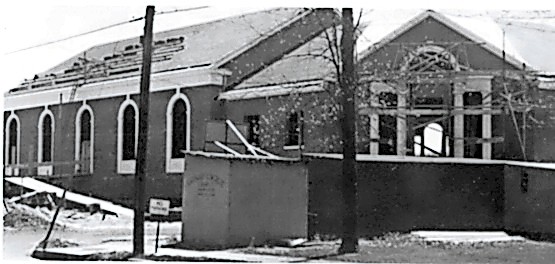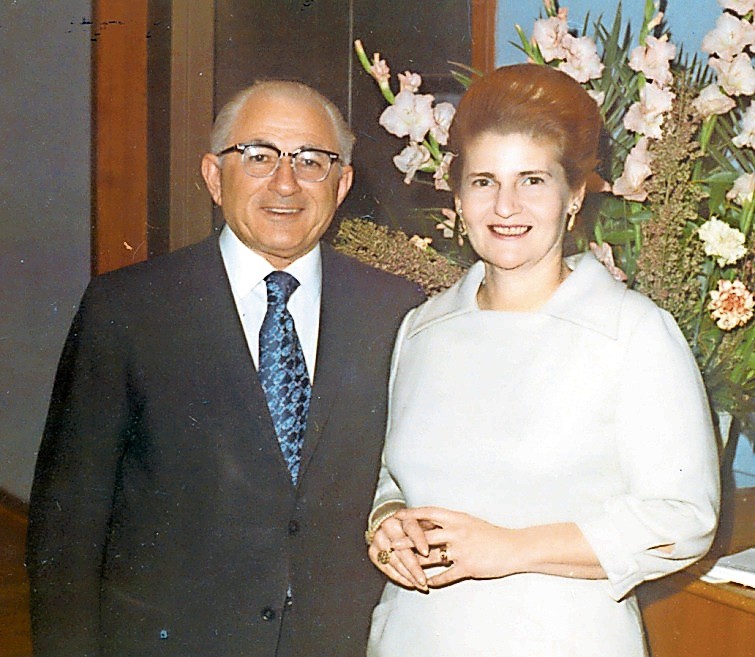A special anniversary
Central Synagogue of Nassau County celebrates 80 years in Rockville Centre

Central Synagogue of Nassau County is celebrating a big milestone this weekend — its 80th anniversary.
“Eighty is a special anniversary because it is two times 40,” said Rabbi Marc Gruber, who has been at Central Synagogue since 2002. “Forty years equals a generation, so I like to think of it as three generations. Our founders founded a synagogue when there were Nazis and Camp Siegfried in Yaphank. The middle 40 years were folks who had built this institution and given us a legacy and given us a space to be experimental. The next 40, they adjusted to changing conditions and built the vibrancy of the future.”
On Dec. 30, 1935, 58 families met at the Milburn Country Club to discuss forming a congregation for Reform Judaism. The next year, Central Synagogue of Nassau County was incorporated. “This congregation … had no building and had no history,” said Richard Skolnik, a temple member and historian. “But they attracted a recent graduate of Hebrew Union College by the name of Roland Gittelsohn.” Gittelsohn became the synagogue’s first rabbi.
For most of its first decade, Central Synagogue’s services were held at the Masonic Temple, and Saturday and Sunday classes at Wilson School. “They had to make sure there were no Hebrew materials around on Monday, lest the kids be confused,” said Skolnik. “They were quite fastidious in clearing the classrooms so there were no ‘Jewish materials’ around for the rest of the school week. So what is fascinating is that they were all over the place, and yet maintained a congregation.”
In 1941, the congregation purchased property on DeMott Avenue for a permanent home. But construction was delayed because of World War II, and did not start until 1946. That same year, the congregation purchased a home on Salem Road for the rabbi, which is still used to this day. The temple was open for High Holy Days services in September 1947 — congregants sat on folding chairs. The chapel was named after Lt. Dan Hornstein, who died in the war. The school was completed first, in 1954, because of high enrollments, while the rest of the building was completed the year after. Former first lady Eleanor Roosevelt was an honored guest at the dedication ceremony.
“My family lived across the street from Central Synagogue,” Gloria Berger, who has been a member for 62 years, recalled. “My husband-to-be returned from World War II. We had been together for five years. We were going to get married within 10 days, and Rabbi Gittelsohn married us in my mother’s living room.”
After the war, membership climbed, as more people moved to the suburbs. It peaked in 1958, at 936 families.
In 1954, Gittelsohn moved to Temple Israel in Boston. George Lieberman replaced him. “Rabbi Lieberman was just an amazing person,” said Berger. “He was very revered and very respected and very easy to reach.” In 1978, Lieberman was the first rabbi to preach at St. Agnes Cathedral, at an interfaith Thanksgiving service. He also led campaigns in support of Soviet Jews and lectured on Judaic studies at Molloy College.
Louise Skolnik got to know Rabbi Lieberman during her graduate studies at Adelphi University. “I did a paper on issues related to religion, and someone suggested I meet with him,” Skolnik recounted. “And I had a two-hour, three-hour meeting with him, and I was totally, totally captivated by his intellect and the time he gave me. I wasn’t even a member at that time. And so having him as my rabbi was extremely important to me.”
Skolnik added that when her family joined the synagogue in 1975, it was important that her daughters grow up in a congregation that valued women and considered them equal to men. “To our sheer delight, in 1975, when we went to our first High Holy Days services there, there, sitting next to the rabbi, was a woman,” she said. “A woman of elegance and quality and intellect, who served the synagogue until her death.” That woman was then temple President Lenore Sandel.
Other members also said they were drawn to Central Synagogue by its focus on social justice and gender equality. Lidia Epel said she always felt welcome as a single parent, and she joined in 1977 so her then 5-year-old daughter would have the same opportunities as her son. “Not every branch of Judaism allows daughters to read from the Torah and do certain things,” Epel said. “At the time, the other synagogue would not allow her to read from the Torah. So Central was a better fit for us.”
Helene Parker never missed a class for her adult bat mitzvah. “It had to be more than 20 years ago,” she said. “Because at my age, we did not have bat mitzvahs. I was in the first class of adults to have a bat mitzvah. And we had men in the class also.”
Other longtime congregants said the draw of Central Synagogue was its comfort and familiarity. “Although many things have changed during the years,” said Jack Popman, a member since the mid-1960s, “the fact that Central Synagogue is important in our lives was true for many congregants then, and it is for many congregants now.”
“My grandmother joined a year after the temple was formed in the ’30s, my parents joined in the ’40s and I got a membership in the ’80s,” said Benjamin “Buddy” Meyer. “… Why go somewhere else? Your friends are there, it’s family.” A longtime member of the synagogue’s Boy Scout troop, Meyer was scoutmaster for 30 years.
In 2012, the synagogue began sharing space with the Reconstructionist congregation Beth Emeth. The two congregations often collaborate on events and programs.
There have been many changes to the synagogue through the years — changes reflected in Reform Judaism and American religious life in general. As time went on, more Hebrew was incorporated into services, which changed in order to attract younger people. Currently, there are Shabbat services that include meditation, ethical discussions, activities for young families and current events.











